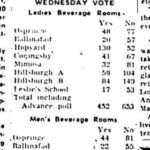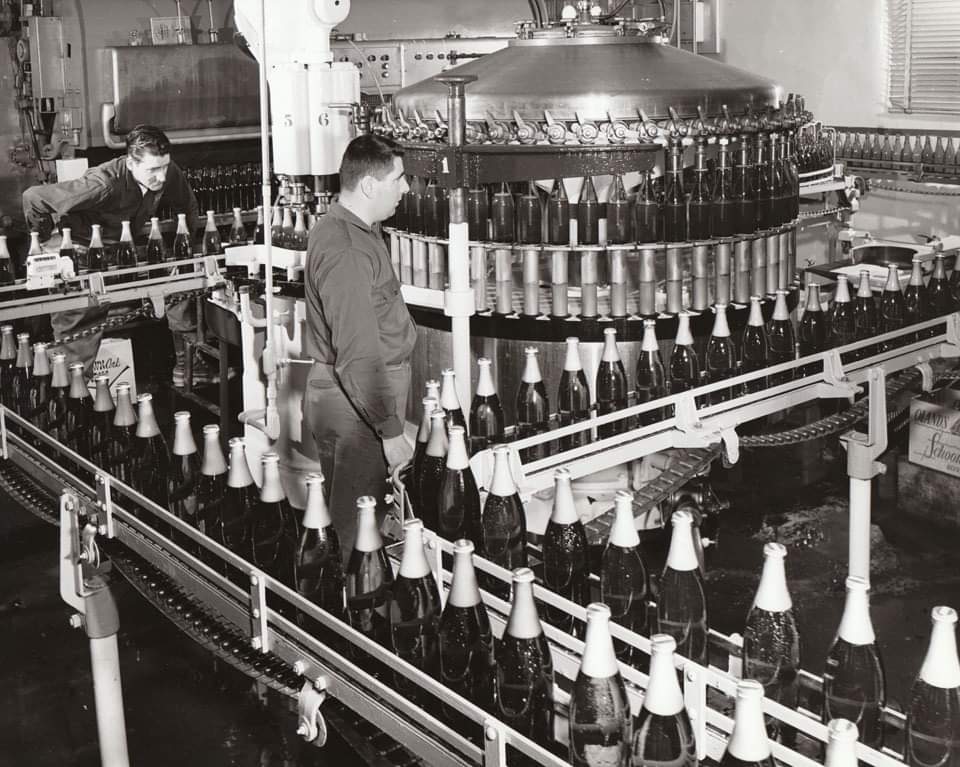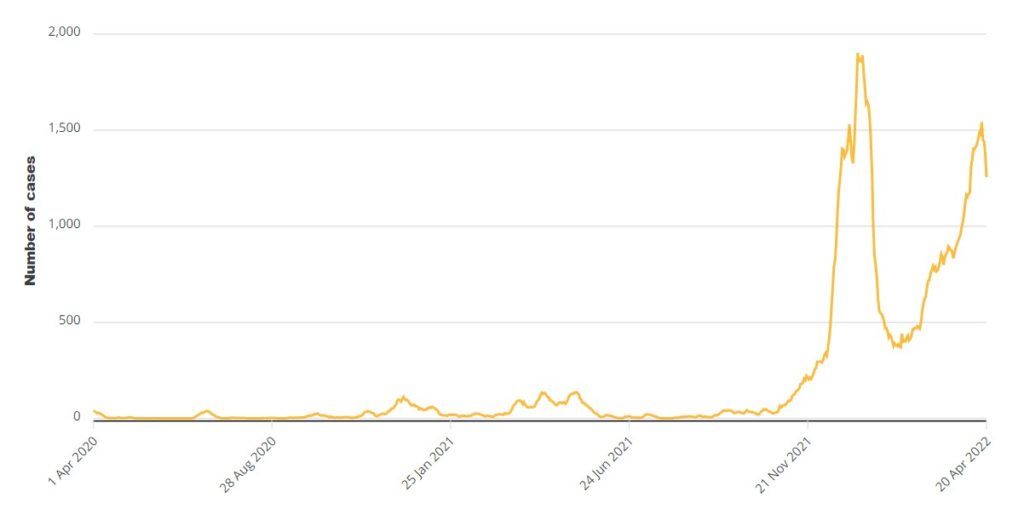November. Yippee, November! No one ever said that. Maybe if you were born on the first of November. Or in New Zealand. A New Zealander born on the first of November might be feeling they hit the jackpot, come to think of it. DSL might, too. Speaking of which, the Austrian Beer Party is saying yippee or whatever it is you say thereabouts. Still at 10% in the polls, down from 13% a month ago but no joke:
An upstart satirical party whose flagship policies include an unconditional beer allowance for every citizen and municipal lager fountains has come out of nowhere to win fourth place in national opinion polls. Founded in 2015 by a charismatic punk rock singer, the Beer Party was until very recently a fringe phenomenon in Austrian politics, scraping only 0.1 per cent of the vote at the last parliamentary election in 2019.
What else is up? I need to make this snappy. Things to do. Naps to have. Hmm…. Crisp Malting issued its 2022 Harvest Report which contains some startling observations about the climate:
It was the sixth driest summer on record and the driest since 1995, with just 62% of the usual summer rainfall. Additionally, we also saw more sun than usual at 115% of the 1991-2020 average. As a result of all this weather, it was the earliest barley harvest ever – some fields were cut on June 29th – and by July 19th, 70% of the UK winter barley harvest was cut. In the 50s and 60s, this would have been a month later, in August. Harvest in Scotland closed out earlier than usual also, another demonstration of the impact climate is having on our agricultural calendar.
Jings. Word is by 2042, the harvest will take place in 2041 a full twelve weeks before the time of planting. Canada is also having a bumper crop – and seeing higher prices for the wrong reason.
And I’ve come across something I am not sure I’ve seen as much as I thought I might – a review of the Good Beer Guide from Phil Mellows of British Beer Breaks who attended the book launch:
The strength of the Good Beer Guide, and what makes it different from, and in many ways better than, competing guides, is that the people picking the entries are so close to the ground. They know exactly what’s going on with the pub, because they drink in there week in, week out. This is also a weakness. A pub can fall out of favour with these individuals for all kinds of reasons that may be obscure to the occasional visitor. And there must be, it seems to me, a growing pressure on the decision-making resulting from the limit imposed on the number of entries allocated to each county or region.
Economics abounds. Muskoka buys Rally. Bench Brewing and Henderson sorta maybe merging. And Jeff has it right – Ommegang has lost its way. Another sign of the times? Lost Abbey is cutting back:
The Lost Abbey’s co-founder and managing partner Tomme Arthur says the scale-down is an acknowledgment of vastly different market conditions than those of the brewery’s sales heyday seven years ago… Arthur says he hopes that reducing costs, particularly on rent and property taxes, will mean the brewery can maintain its staff of roughly 35 employees. “You can’t get small enough quick enough if you’re trying to protect the flank,” he says.
I’m worried. Not about beer. There will always be beer. I am worried about my problem with Twitter. If we lose Twitter there’s bound to be a new problem for me that will replace my problem with Twitter. I’m having a look at Mastodon but who’s over there? 100% of everyone voted to not “Quit the Twit” in my scientific study. And what will I do without it, without for example good folk going all pointy finger over a history of lambic which is an accusation of all other histories of lambic? I quite like “jeremiads full of invective“… although he’s misspelled jeroboam, hasn’t he. Sad.
Sadder? A thieving beer guzzling monkey in India!
Matty C has also asked a question of verbiage. Specifically the use of Helles:
I’m talking about ‘Helles’, and how it’s become the latest in a stream of buzzwords the lager machine has sacrificed to maintain its youth and vim. But why this particular terminology, and how did it take hold? How accurate are modern brewers’ renditions of this classic Bavarian style? And does what a beer is called really matter, if people are enjoying great lager as a result?
I like my words to mean what they mean and not mean what they don’t mean. Otherwise it can lead to things. Ron found himself lead to things and in a bit of a pickle out and about on the Brazilian beer tourism scene again:
Last full day in Brazil. A bit weird. An election and the clocks changed. Plus everything in the centre of Florianopolis is shut…. It’s going crazy outside. People clearly think Lula has won. I hope that’s fireworks and not gunfire.
I trust it all worked out. Speaking of travel and a bit more sedate sort bit of travel, B+B took us to Cologne, Germany this week and laid down a new law:
We decided on a rule: you need a minimum of three beers per pub on a Kölsch crawl. The first one will taste weird because it isn’t the same as the last you were drinking. You gulp that one down. Get the city scum out of your throat. The second, as you acclimatise, allows you to pick up distinct aromas and flavours. How is it different? Why is it different? The third allows you to appreciate what’s in front of you in its own right, and decide whether you want to turn this into a real session. Or walk on. Because you’re never far from another.
In brewing history this week, Gary highlighted the upcoming 2022 Chicago Brewseum Beer Summit and, elsewhere, @AfricanArchives wrote about a moment in history that I had not heard about – The Battle of Bamber Bridge which saw US soldiers fighting each other in England in 1943… and the local English publicans taking a side:
In 1943 Black American soldiers faced off with white American Military police during World War 2 on British soil. Black American soldiers had to fight their own white American soldiers, while in England, where they were fighting the world war. …when the American Military police found out that their own black soldiers were drinking at the same pubs as white people, they went in to arrest them. The people in the town got mad about that treatment and decided to then turn their pubs into “BLACKS ONLY DRINKING PUBS”
Finally, a less inspiring story came to light just when the blog post was going to the presses. Ben Johnson posted an excellent exposé on one Ontario brewery facing little public condemnation after allegations of sexual harassment:
It is unfortunate then that, when the City of Kitchener recently opened up their Requests for Proposals (RFP) process to find a “non-premier brewery partner” to serve beer at the Kitchener Memorial Auditorium Complex and Kitchener Golf Courses, they awarded the contract to Four Fathers Brewing Company in Cambridge. Unfortunate, of course, because in 2018 Four Fathers founder and University of Guelph Professor John Kissick actually was charged with two counts of assault and one count of assault with a weapon. Those charges were ultimately dropped in 2020 when Kissick entered into a peace bond with the party who brought forward the charges, but to craft beer drinkers and any feeling humans who watched video of the (alleged) assault (myself among them) the incident likely left a bad taste in their mouth.
There. Nothings like ending on a crummy note. For better news, please check out the updates from Boak and Bailey hopefully now again mostly every Saturday and also from Stan more now on a Monday than almost ever! Check out the weekly Beer Ladies Podcast. The OCBG Podcast is on a very quiet schedule these days – and also sometimes, on a Friday, posts at The Fizz as well (Ed.: we are told ‘tis gone to 404 bloggy podcast heaven… gone to the 404 bloggy podcast farm to play with other puppies.) And the long standing Beervana podcast (Ed.: which I have missed from this list for some unknown reason.) There is the Boys Are From Märzen podcast too and check out the travel vids at Ontario’s own A Quick Beer. There is a monthly sort of round up at The Glass. (Ed.: that seems to be dead now… nope, there was a post on July 25th… in 2022 even.) There is more from DaftAboutCraft‘s podcast, too. And sign up for Katie’s (Ed.: now very) irregular newsletter, The Gulp, too. And check out the Atlantic Canada Beer Blog‘s weekly roundup. Still gearing up, the recently revived All About Beer has introduced a podcast, too. (Ed.: give it a few weeks to settle in and not be as agreeable… not sure this went very far…) Plus follow the venerable Full Pint podcast. And Fermentation Radio with Emma Inch. The AfroBeerChick podcast as well! And also look at Brewsround and Cabin Fever. And Ben has his own podcast, Beer and Badword (Ed.: …notice of revival of which has been given… still not on the radio dial…) And remember BeerEdge, too, and The Moon Under Water. There was also the Beer O’clock Show but that’s now gone after a ten year run… no, it is back and here is the link!


 Before we get going, an update on the comments I made last week about my hopes and dreams for a
Before we get going, an update on the comments I made last week about my hopes and dreams for a 
 Beer snake! Never seen one from that point of view before. Thanks to beer and baseball specialist
Beer snake! Never seen one from that point of view before. Thanks to beer and baseball specialist  : not Pete’s best photo… that is Pete, right? And grey? Really. Talk about yer dreich! No… not Pete… no, the logo’s background!!****
: not Pete’s best photo… that is Pete, right? And grey? Really. Talk about yer dreich! No… not Pete… no, the logo’s background!!**** So… me and we are back from holiday. And I’ve been away and back on the road for work already. Before the before I was roadlying it a lot but the big project is in the final strokes and, happily, it seems all turned out fabulously. To the extent I understand. We are well past the gravel, moved on from the concrete and are thinking asphalt. School starts next week, too. Just a few first days of school left in this family. Days are being squeezed by the junior ranks. I am looking forward to the big holiday one day, a life with days like
So… me and we are back from holiday. And I’ve been away and back on the road for work already. Before the before I was roadlying it a lot but the big project is in the final strokes and, happily, it seems all turned out fabulously. To the extent I understand. We are well past the gravel, moved on from the concrete and are thinking asphalt. School starts next week, too. Just a few first days of school left in this family. Days are being squeezed by the junior ranks. I am looking forward to the big holiday one day, a life with days like 












